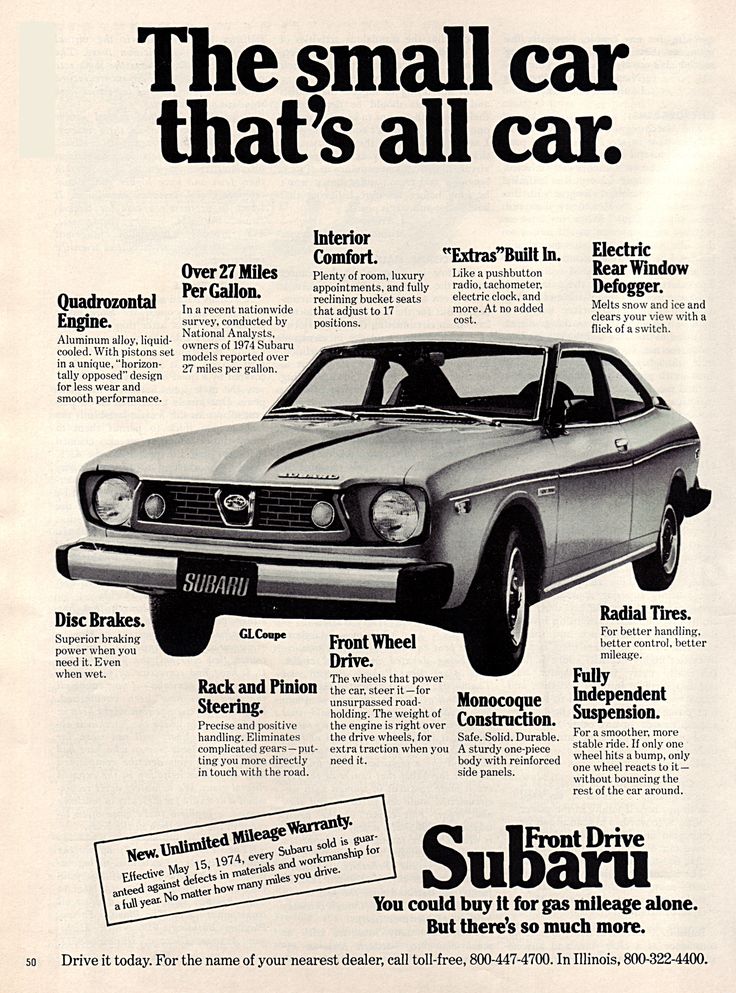0 shares
There are a lot of different types of RVs spanning from monstrously large Class A motorhomes to travel trailers, teardrop trailers and popup campers.
Though the one thing they all have in common is that they all have at least two tires that get them where you want them to go.
Just like your car or pickup truck, your RV’s tires have a limited lifespan that can be affected by a lot of different factors. Not the least of which being the number of miles traveled.
Of course, RV tires are not cheap, and replacing them will take a big bite out of your travel budget.
This is why so many RV adventurers wonder how long will my RV tires last? The typical RV tires will last for around 8,000 to 15,000 miles, depending on the quality of the tread and usage. For most RV adventurers this translates into about three to five years of use before the RV’s tires need replacing.
Though there are several factors and maintenance tasks that can increase or decrease the lifespan of your RVs tires.
If you are concerned about how long your RV tires will last, or you just want to make the most out of them, this article is loaded with helpful information.
RV Tire TreadLike all tires, the tread wear will play a major factor in how long your RV tires last. RV tires come with different tread life ratings.
If you are buying new RV tires, it might be worth it to spring for the highest rating tread life for your replacements.
Especially for a motorhome’s rear axle drive tires which see the most wear and tear.
How To Determine The Amount Of Tread Life On RV Tires?Determining the amount of tread life on an RV’s tires yourself typically involves the “Penny Test.”
You insert the penny into the deepest part of the tire tread with the penny facing toward you.
Ideally, a significant portion of Abraham Lincoln’s head should be hidden by the tread.
If you can see all of Lincoln’s head, then the tread is less than 1/16th of an inch, and you absolutely need to replace the tires as soon as possible.
Just bear in mind that 1/16th of an inch is the bare minimum. Ideally, you want at least a quarter of 4/32nds of an inch of tire tread.
Uneven RV Tire WearOne of the things that kills a lot of RV tires before their time is uneven tread wear. This can be caused by a wide variety of things including:
Sometimes you can visually notice signs of uneven tread wear, though usually, this means that the tire is in such poor condition that it needs to be replaced to make it truly roadworthy.
So, it’s a good idea to always check all your RV tires before departing on any trip.
Make sure to perform the “Penny Test” on each tire in multiple locations including the middle, the inside tread and the outside tread lines.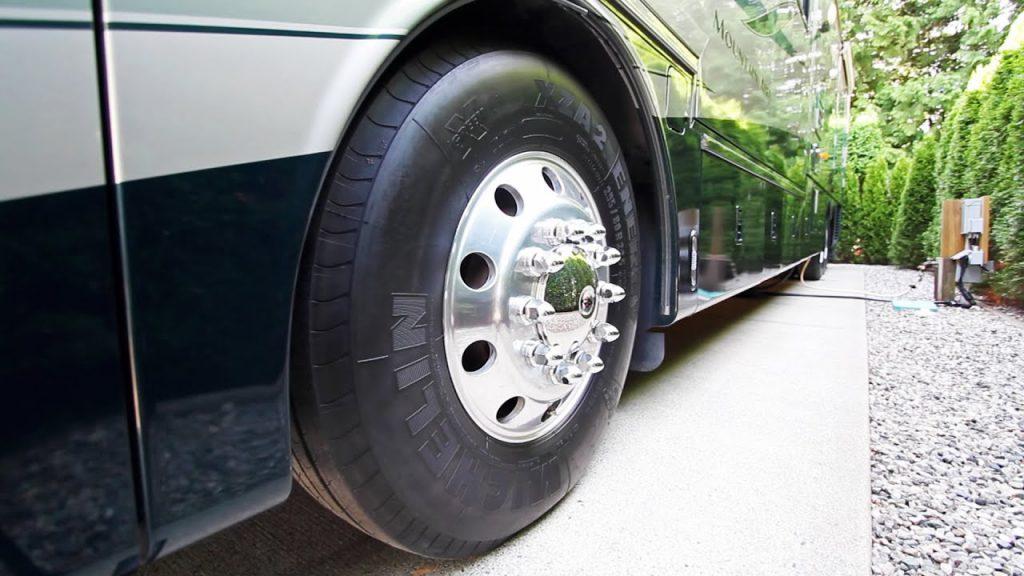
It’s also worth noting that the age of an RV’s tires can also limit the remaining lifespan. Especially if your RV has been stored outdoors.
The elements can cause even tough vulcanized rubber to start to fade, crack and stiffen.
If your RV’s tires are more than five years old and you are seeing signs of cracking in the sidewalls or delamination of the tread, you should replace them as soon as possible.
Determining RV Tire AgeLet’s say you took the plunge and bought a gently preowned RV, the tread on the tires looks good, but you are worried about the overall age.
Of course, the chances of the previous owner honestly telling you how old the tires are and any concerns they have about them is relatively low.
Fortunately, tires come with dating information printed on them. Though you have to know how to read the code.
Look carefully on the tire for DOT. It will be followed by 4 numbers. The first two numbers are the week of the year that the RV tires were made, and the last two numbers are the year.
The first two numbers are the week of the year that the RV tires were made, and the last two numbers are the year.
If the RV tires say DOT1120, it means they were made in the 11th week of 2020, which would be mid to late March.
Tips For Making The Most Out Of RV Tire LifeThere are a few things you can do to help get the most life out of your RV tires. Though some of them can vary depending on the type of RV as well as your preferred travel style.
Rotate Your RV’s TiresIdeally, you should rotate your RV’s tires every 6,000 to 8,000 miles. Especially if it is a motorhome where the rear-drive tires suffer more wear and tear than the front steering tires.
Though even a travel trailer’s tires will benefit from rotating as minor mechanical variations in simple things like how the trailer tracks can lead to uneven tire wear.
Check RV Tire Pressure FrequentlyYou need to check your RV tire pressure at key points. This includes at the start of a trip, as well as when you get to camp, and when you finally get back home.
This includes at the start of a trip, as well as when you get to camp, and when you finally get back home.
Being thorough helps you do things like catch a potential slow leak in a tire before it causes uneven tire wear, a flat tire, delamination, or a total blowout.
It’s also a good idea to check the tire pressure before storing the RV, as part of your winterization process.
If possible, check the tires two or three times during the winter. Many a pair of RV tires has been ruined by a slow leak that made them go flat during long-term winter storage.
Keep A Portable Air Compressor In Your RVSlow leaks might start out as a minor inconvenience, but they can turn into a major problem if the tire gets too low.
Countless numbers of people have parked up at their campsite only to find one or two of their RV tires has a slow leak.
When you have a portable air compressor on board, you can refill these tires before hitting the open road, rather than risking popping a bead, severe tread wear or a blowout just trying to get back to civilization.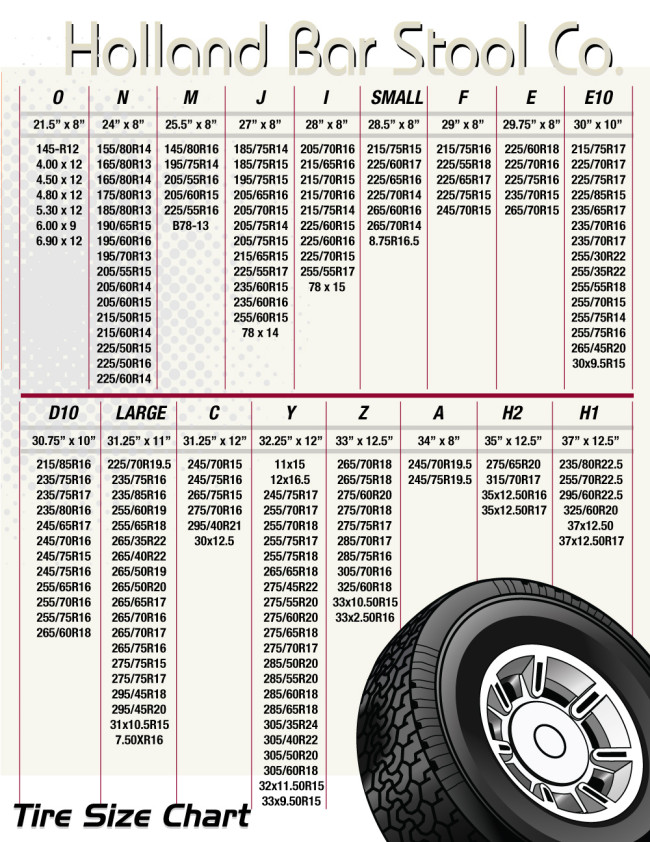
Keep an eye on your RV tire tread. Little things like the penny test or using a tire caliper will help you determine when it is time to rotate your tires.
It can also help you catch things like an alignment issue that needs to be repaired.
Perform Routine MaintenanceIt’s all too easy to learn to live with a minor variance in your motorhome’s alignment or a travel trailer that pulls a little bit to the left.
Though left unchecked these minor issues can contribute to the kind of uneven tire wear that will kill RV tires long before their time.
Getting these issues repaired by the certified mechanic will help pay for itself in extended tire life as well as an RV that is safer on the road.
Use Jack Stands & Supports When CampingEven if you are going to be parking up your RV for a single night on your way to a far-flung destination, you should still use the necessary jack stands, struts or supports for your RV.
Not only will this take some of the load off the tires, but it can also improve the overall life and performance of your RVs suspension system, which can also affect tire life in the long term.
Replace Tires When NeededIt’s tempting to try to push an RV tire or two beyond their expected lifespan. Especially if your RV has multiple axles.
Unfortunately, the poor performance or uneven tread wear of these compromised tires can affect the life of other tires shortening their life prematurely as well.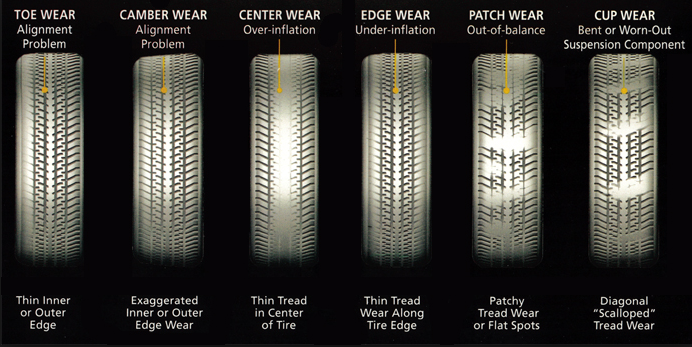
RV Tires tend to have an average lifespan of around 5 years. Perhaps less for a motorhome that puts on a lot of cross-country miles, perhaps more for a travel trailer that only two or three short vacations away from home every year.
Taking care of your RV tires by checking the tread and frequently checking the tire pressure, as well as storing it properly will go a long way toward getting every last mile and moment out of them.
It will also help reduce the overall cost of ownership that comes with routine RV tire replacement.
Everyone loves a good adventure and traveling to the perfect destination spot takes a lot of preparation. The last thing you want is for your tires to not keep up with all the places you want to go. You also know that sometimes it’s the products you don’t really notice that are the best because of their ability for you to focus on the most important things–like your traveling.
RV tires last about 3-6 years with regular use. However, certain conditions can speed up of the degeneration of your tires. One of the best all-around tires is the Goodyear Unisteel RST Radial Tire for longevity and quality.
Just like how you need a great pair of shoes to get you through hours of hiking, walking, sports or other activities, your RV needs to have great tires. Even if you get a top of the line RV, it won’t matter very much if you can’t go more than 5,000 miles on a single set of tires.
There are a lot of factors to consider when choosing the right tires and things that you may not otherwise know until you fall victim to a blow-out or get stuck paying a large amount of money unexpectedly for a replacement. Luckily, we are able to provide you with some helpful tips, so you can have confidence when you hit the road.
In this post we will be highlighting the life span of tires, what kinds last the longest and give suggestions. We will also look at some helpful tips and tricks you can do to increase the life of your tires and how to know when it really is time for a replacement.
As a result, we will hopefully save you a few extra dollars and struggles in giving you some help in knowing more about your vehicle and how it operates. Not only for your wallet’s sake, but also for your safety it is really important.
Luckily, if no one has told you these things before, today is your lucky day to be educated and find out some great suggestions to keep you safe, happy and on the roads.
As stated above it is pretty typical to find that the life of the tire lasts around 3-6 years, however, it does depend on a few conditions that affect how long it will last. Weather, road conditions, how many miles you go, and how heavy your load is are just some of the things that can affect your tires.
There have been some reports of tires lasting beyond the 3-6 years with some tires even lasting anywhere between 5-9. However, since there are a few factors that affect the life of your tires, you may affect the life of your tires, despite some of the averages.
“. . .driving habits, driving and storage conditions, geography, atmospheric conditions, loads carried, weight distribution, as well as the age of your tires [are major factors in effecting the life of your tires].”
-Gary Motley. Master Certified RV Technician.
Gary Motley is definitely an RV force to be connected with. As one who fixes plenty of broken or damaged RVs he knows some really helpful tips that come from his line of work.
His experience helps us take a look at how we treat our trailers. Maintaining our RV’s tires are just as important and should take just as much time and consideration as planning your vacation did.
Sometimes slow and steady is really hard to do especially when you are really excited to get out there and start going to your next destination, but if you want to get the most out of your tires, you’ll keep the fast and furious tendencies out of it!
With the driving and storage conditions section, it is pretty straight forward to know that driving on a lot of gravel-filled, uneven, or icy roads could cause some problems.
If you are just looking for how many miles you can put on your tires you can get about 80,000-120,000 thousand miles per tire. This may last two years if it is a commercial truck where you are constantly driving heavy loads. RVs driving only 5,000 miles a year may take up to 20 years to obtain the same wear and tear.
However, as we will look at further, the RV world is a little different than the traditional automotive side. We use our regular vehicles more than RVs and so that will affect the designs and maintenance of the RV or travel trailer.
There is so much information on the internet you can find anything you are looking for. I found some of the best options online. Here is a quick list of the best five tires you can get for your RV and why.
Here is also a quick comparison chart between each of the tires that I selected. Each tire is highlighted with a link to check out each product on Amazon.com. You can see more details and other specifications if you need more information than what was provided or are looking to buy.
Each tire is highlighted with a link to check out each product on Amazon.com. You can see more details and other specifications if you need more information than what was provided or are looking to buy.
Again, a good rule of thumb is to consult with a professional to see what tires you specifically can use on your RV and other details. You have a lot of pounds to carry over a long distance.
Listed on here is something called the Load Rating Index. If you aren’t sure what that is, scroll down to the posted chart and details so you can get an idea of what your tires can handle.
| Manufacturer | Price per (1) Tire | Highlighted Feature | Load Rating Index | Public Ratings |
|---|---|---|---|---|
| 1. Goodyear | $120- $130 | Most reliable | 126 | 4.2/5 |
| 2. Michelin | $230-$240 | built for various wheel sizes | 120 | 5/5 |
3. Bridgestone Duravis M700 Bridgestone Duravis M700 | $230-$250 | Long-Lasting | 120 | 5/5 |
| 4. Maxxis M8008 | $90-$110 | Decreased rolling resistance | 117 | 4.1/5 |
Each tire has unique features, but these select four are just a few brands that last quite a while. There isn’t just one brand that produces the all-around tire for your RV, yet there are some really great competitors.
Let’s just review a little bit about each brand and tire so you can get an idea of how long they last.
Goodyear has some pretty impressive reviews for how reliable, purposeful and durable it is. At a pretty affordable price as well as a high load index, you’ll definitely get your money’s worth with it. It is one of the more expensive ones out of the mix but performs so great its worth every penny.
You can expect about 12,000-15,000 miles on which is about 3-4 years. Considering this tire is one that is pretty decked out with features, that’s a great length of time.
Michelin’s XPS RIB truck radial tire is expected to be replaced every ten years whether or not you have reached the number of miles you have put on it. That is pretty typical for tire companies and for them to suggest regular inspections.
You will find that this wheel is a great option if you have unique or hard to find tire requirements. It’s really durable and affordable. Due to its steel casing on the tire, you’ll be able to get a lot of life out of this tire.
Bridge stone’s RV tire that we selected is pretty unique. It works for both commercial tires as well as truck tires. Very versatile and isn’t just for your RV, so if you loved your trucks tires or want to give them an upgrade, you can knock out two birds with one stone, so to speak.
This tire also does pretty well in light snow. It has a really unique tire tread to help provide traction and helps it resist getting punctured by objects. This tire lasts about as long as the Good year tires as well.
Lastly, the Maxxis trailer tire is nice and study and take large loads over a long distance. A nice thing about this tire is that it also helps give back with its design through a great energy return and not having so much resistance on the road.
A nice thing about this tire is that it also helps give back with its design through a great energy return and not having so much resistance on the road.
Even if something were to happen sooner than expected with the guarantee, most Maxxis tire companies provide up to a 5-year warranty on the tire. So you can travel where ever you want in safety.
After you choose the right tires it is recommended that you have a professional install the tires. A really good resource to consider is calling your local tire shop and ask what they suggest for your particular model.
All the suggestions on this blog are from high reviews from customers that have used these particular models. This is also a general site of a rule of thumb. Not all trailers are the same and have certain specifications and requirements for what kind of tires and how much of a load they can take.
Sometimes we get lured into a false sense of security that our tires will last forever and it will be easy to know when to replace the tires we have. In some cases that may be true, but for our RVs and travel trailers the composition of these tires are much different than what you may expect
In some cases that may be true, but for our RVs and travel trailers the composition of these tires are much different than what you may expect
For a minute we will be going over some differences between regular passenger tires (like the ones that can be found on your Ford Explorer or Smart Car) and RV tires.
The tires that are found on trailers and RV are actually a lot thicker than normal passenger tires, however, they do function a little differently. Sometimes thicker means less mobile.
They aren’t designed to be as “comfortable.” This means that you can feel bumps a little more if you were to ride in the back of your trailer and are sometimes harder to turn because of it. These types of tires are usually found in vehicles that you tow with your car.
Depending on if you are towing your trailer or if your trailer is towing your passenger vehicle it will affect the kind of tires you have on your car. ST which stands for Special Trailer and LT which stands for Light Trailer are two kinds of indicators on tires that tell you their purpose.
It won’t affect too much as long as you put the right tires on the right vehicle. The potential problem you have is if you put a follower trailer tire on the vehicle that is actually towing or is your RV it will be a lot harder to maneuver your vehicle making it not as effective or safe.
In terms of how durable tires really are, well they can put up with a lot of bumps, weather conditions and other things. They can last thousands of miles, but just remember: how you treat the tire affects its life.
If you are like my uncle, everything can be maxed out a little more than what is suggested like getting every last bit out of his toothpaste. He’s pretty frugal, which is good. But be careful to not take it to the extreme of frugality becoming too extreme to the point where you aren’t being safe.
There is a little bit of wiggle room with product suggestions sometimes and there is also a time to where you just need to replace them and you shouldn’t feel guilty about dropping a few dollars with it.
Overall, there are some simple things to look for that will help increase your safety and give you some peace of mind.
Here’s a quick chart that if you aren’t sure what your load capacity is. If it has a load capacity of 85 that doesn’t mean it can only carry 85 pounds but can actually carry around a maximum of 515 kilograms.

RV tires aren’t that way. They sit out a lot of the time or are just taken out a few times a year if that if the weather is nice. So if you have had your tires for more than 5 years and haven’t used them a lot, or even if you have. It’s highly recommended that you get them checked.
An ounce of Prevention is worth a pound of Cure
Desiderius Erasmus
As the above quote states that prevention is a much better approach than trying to figure out solutions to something that could have been solved with a little bit of care and observation.
Preventing long-lasting issues by some small and simple things we will be talking about is a lot easier and effective to maintain your RV or travel trailer.
Below, as you read, is a short video of things to watch for and helpful tips that you can apply to your tires. It is from a long-time RV owner who has some really good tips.
If you are unable to watch the video, down below we have a few notes and tips for you to be aware of to help preserve and protect your tires.
First off, if you notice uneven wearing of the tire tread like too much on one side or just some odd shapes, this could mean that your axle alignment/chassis is off. If that is the case, this can lead to premature tire replacements and unexpected expenses.
A good solution for this consulting or taking your RV into a professional to fix your alignment and replace your tires. It may not seem like a big deal, but it definitely could cause more issues than just a flat tire while you’re out on the road.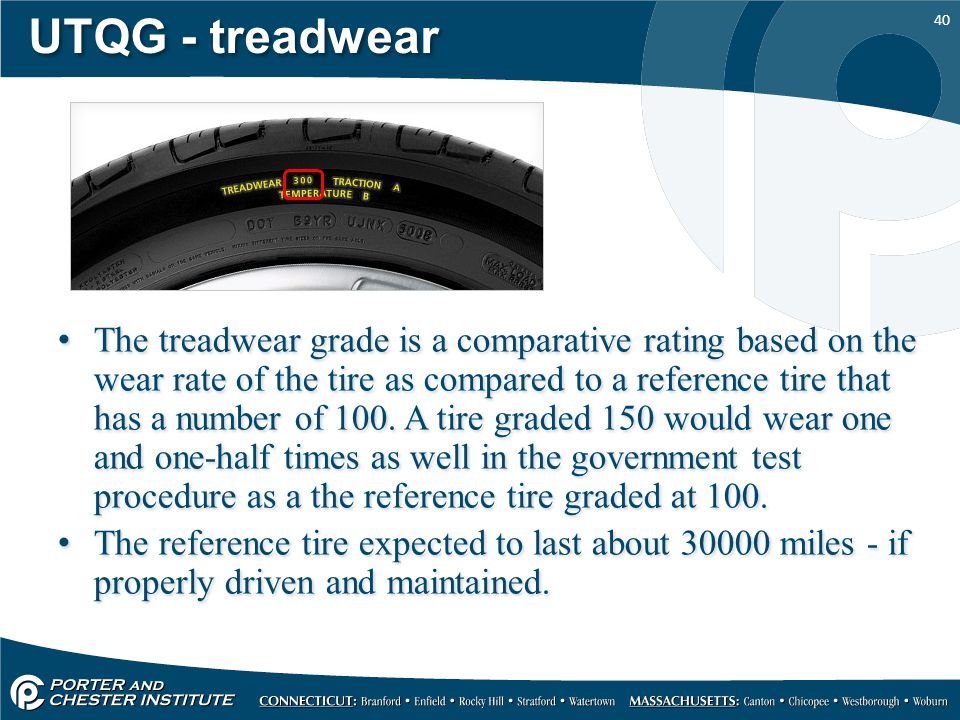
Ideally, you would have gone to a tire professional to put your spiffy new tires on there for you in the first place, but if you were dealing with a quick fix or just didn’t have the resources to take it in, we understand.
Another great note would be to wash your tires. As stated in the video above, it doesn’t take very long, but road oil and debris can affect the life of your tire. Road oil is a bit corrosive and can wear down the outsides of your tires.
I’m also pretty sure all of us have seen nails or other sharp object penetrate tires either on your own vehicle or a bike etc. They aren’t very pleasant. By doing a thorough check of your tires and washing them, you’ll be able to make sure you catch issues early on.
As suggested in the video Aerospace 303 is a water-soluble solution you can spray on after washing your tires to help. There are lots of different brands that you can get a protective spray for after you wash your tires.
It is also suggested in the above video that you get little pads that you can place under the tires to protect them from the debris and other elements outside. These pads are useful for portability and stability when you are parked for a while.
These pads are useful for portability and stability when you are parked for a while.
Most people forget that the sun has a big effect on not only their health but also on their vehicles and tires. The UV rays from the sun can be damaging. By using tire covers you’ll be able to protect the tire from the rays of the sun when you aren’t out and about.
Since most tires are almost always outside having a lot of sunshine and heat on your tires makes your tires wear down a lot faster than others.
You can also use multi seal products: these are (usually) spray-able tire sealants to keep air from slow leaks or punctures from getting out of the tires less easily.
If you also want to know a cool trick, here are two words: “nitrogen air.” Filling your tires with a nitrogen mix helps give you more consistent tire pressure and it doesn’t leak out as easily as air might.
Nitrogen increases gas mileage and extends the life of your tires because of no leaks and even distribution throughout the tire. A word of caution though, don’t fill your tires too high or let them go to low. Blowouts (whether it’s under or over inflation) can occur if the tire pressure isn’t right.
A word of caution though, don’t fill your tires too high or let them go to low. Blowouts (whether it’s under or over inflation) can occur if the tire pressure isn’t right.
Ironically, the more you use your tires, the better they will hold up. You may think? wait? Wouldn’t a lot of use wear them down? While that is true, scientists developed a really neat element with tires. They replenish themselves as they are driven, to an extent.
Inside tires is a fancy chemical solution that is activated by the sun. As you drive the solution is able to move around the tire which helps provide an inside sealant and preserve a little more of the life of your tire.
Not that you have to take your RV out every day for a morning stroll to keep the tires up, it is recommended that you do go more often than not. Some suggest at least once a month. The biggest rule of thumb is not letting them sit out months at a time.
Another really great thing that some may roll their eyes at. .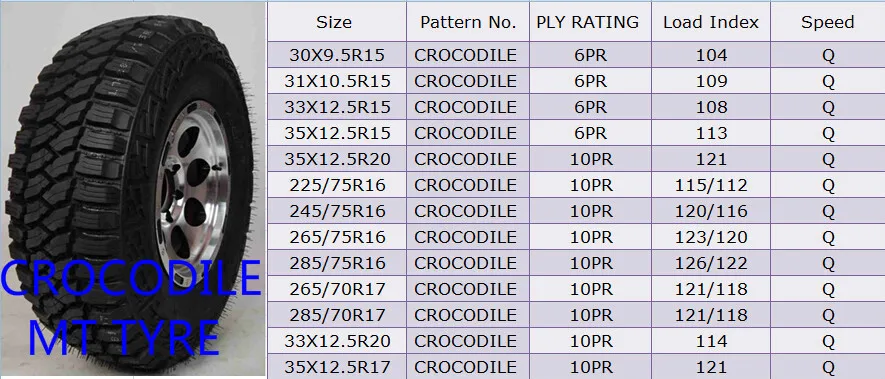 . I know that I do that sometimes– is just check your specific owners manual about how to increase your tires’ life. Despite how boring it may be to some, the information in the manual is a really great guide to help you protect your tires.
. I know that I do that sometimes– is just check your specific owners manual about how to increase your tires’ life. Despite how boring it may be to some, the information in the manual is a really great guide to help you protect your tires.
All these tips are really good general rules that can help, however just like a nice shirt, there are specific instructions in the care of them. This can help preserve and extend the life of your tire. The manual will also help you know when your specific tire should be inspected.
Who knew there would be so much useful information in a manual! I seriously at first, didn’t consider it and didn’t think there would be anything in there I didn’t already know!
Overall, with careful supervision and care, you can get a lot of time and miles out of your tires! Happy travels.
In the past, SUVs were only loved by enthusiasts, but today they are a common sight on public roads. Buyers simply love the versatility these vehicles offer, especially when it comes to space and practicality, all-round capability and image. This versatile nature of modern crossovers and SUVs makes choosing the right set of tires a challenge, especially with so many options on the market.
Buyers simply love the versatility these vehicles offer, especially when it comes to space and practicality, all-round capability and image. This versatile nature of modern crossovers and SUVs makes choosing the right set of tires a challenge, especially with so many options on the market.
What everyone will agree on, at least when it comes to SUV owners, is that these vehicles are best suited to SUV tires. In addition, SUV tires provide excellent traction, traction and braking in most conditions, including dry and wet. The best tires for crossovers and SUVs even offer snow traction.
By the way, what does an SUV on tires mean - this marking stands for Sport Utility Vehicles. SUV tires are designed specifically for crossovers and SUVs.
Tires for 4x4 vehicles have a wider tread pattern than regular car tires mainly due to the larger tread block and deeper grooves. Standard tires perform poorly on surfaces such as mud because the tread quickly fills up with mud and the wheel spins uselessly. In comparison, 4x4 SUV tires have the best grip on rough terrain such as mud, grass and snow without clogging the tread area.
In comparison, 4x4 SUV tires have the best grip on rough terrain such as mud, grass and snow without clogging the tread area.
If you mainly use an SUV, 4x4 or crossover, experienced experts will recommend you a product that is primarily designed for road use. Examples include premium tire manufacturer Continental's ContiSportContact 5 SUV or ContiPremiumContact 5 Sport Utility Vehicle. These are good SUV tires.
The ContiSportContact 5 Sport Utility Vehicle is a very popular choice as it offers perfect grip and optimum handling in every situation, providing short braking distances on dry and (more importantly) wet surfaces, as well as driving comfort and improved drag rolling (this helps to reduce fuel consumption).
The ContiPremiumContact 5 SUV provides superior traction and handling for added safety when cornering, shorter braking distances in all weather conditions, as well as reduced fuel consumption and high mileage.
Tires like these are designed primarily for road use, offering a quieter and more comfortable ride. They are also designed to provide drivers with reduced fuel consumption. How? It's all about tire compounds that offer what's known as low rolling resistance.
These types of tires are also suitable for light off-road adventures, so it's worth remembering that they are primarily designed for urban environments, not muddy fields.
Tires are actually a critical component of every vehicle. As the only connection between your vehicle and the road, they must be well suited to both your vehicle and the conditions you will be driving in.
Think of tires in terms of shoes. You don't wear boots to hike in the mountains, just like you don't wear sneakers to a nice restaurant. SUVs and crossovers, which are larger and heavier than traditional passenger sedans, are more suitable for use in harsh environments. This makes SUV tires especially important for these occasions. While there are many different types of tires to suit different sizes and shapes of SUVs, some of the best options are:
Touring and Grand Touring tires can be used on smaller sedans and crossovers - both have the same curb weight, passenger loads and handling characteristics.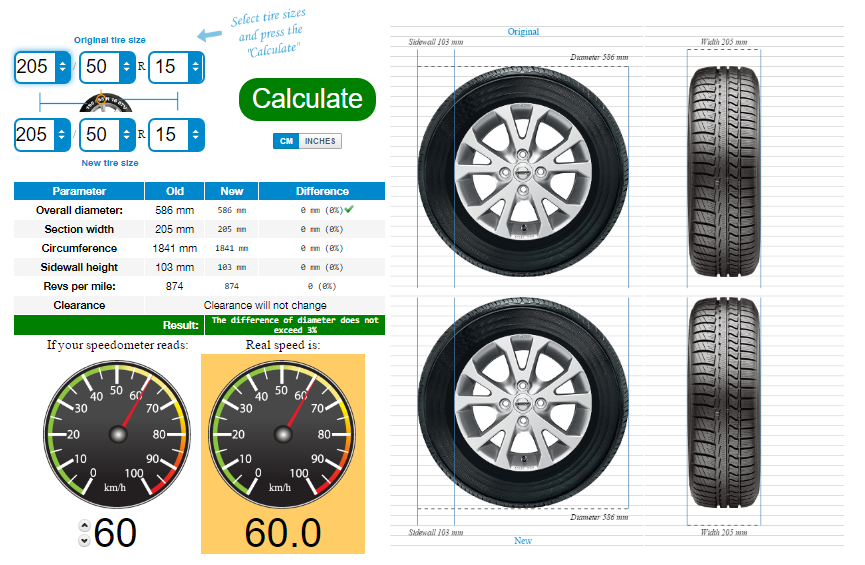 This category of tire is usually rated in terms of ride comfort and noise levels and generally offers improved handling.
This category of tire is usually rated in terms of ride comfort and noise levels and generally offers improved handling.
The Continental TrueContact Tour scores highly in wet and dry conditions with superior comfort and tread wear resistance. TrueContact Tour offers great opportunities for small crossovers.
Continental CrossContact LX20
Crossover/SUV Touring tires have the same performance as Touring and Grand Touring tires, but their size and load ranges are better suited to the extra weight of larger crossovers and SUVs. This tire category is well suited for vehicles with a third row that require the highest driving comfort and low road noise
.
The Continental CrossContact LX20, with a number of benefits similar to its smaller brother TrueContact Tour, delivers superior ride, comfort and tread wear, but in a package capable of handling the higher loads required by a larger crossover or SUV.
Improved performance.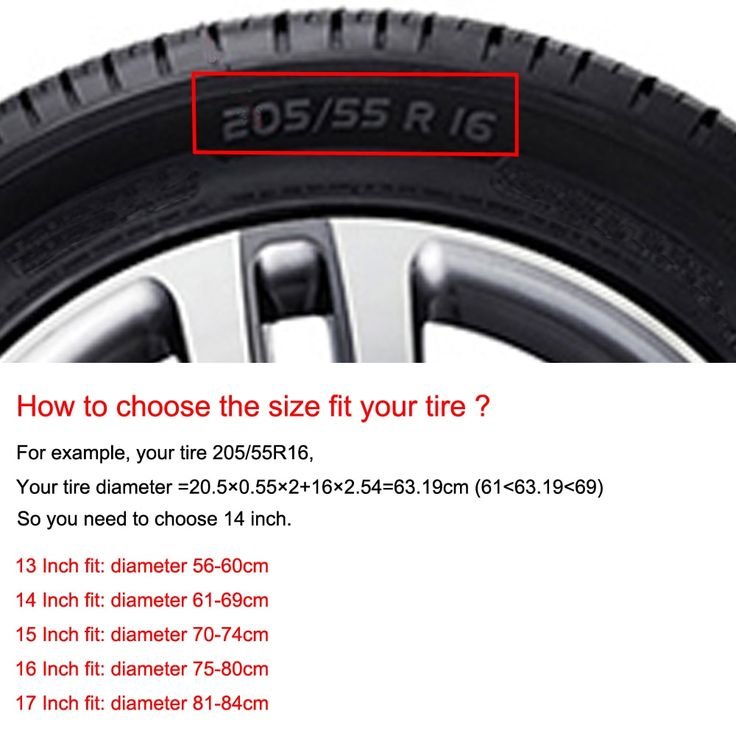 The quality of your tires determines your stopping distance, how smoothly you turn, and how long you stop in an emergency. Older tires have worn treads that are slippery and often take too long to brake. It's better to replace them with new, performance-oriented tires that are easier to control and brake fast enough to avoid accidents.
The quality of your tires determines your stopping distance, how smoothly you turn, and how long you stop in an emergency. Older tires have worn treads that are slippery and often take too long to brake. It's better to replace them with new, performance-oriented tires that are easier to control and brake fast enough to avoid accidents.
Increased security. Depending on the tread wear class of the new SUV tire, your vehicle will be protected for at least the next 70,000 km.
All season traction. Most off-road tires are designed to provide maximum ground contact, especially in high speed conditions. However, not all SUV tires can maintain the same performance over all four seasons. That's why you need two sets of tires: SUV tires for improved summer performance and SUV winter tires for improved traction on loose surfaces.
Comfortable driving. SUV tires, especially those with thick and well-functioning tread patterns, make your car feel like it is "floating on the road". The rubber also produces minimal road noise and is guaranteed to make your highway or off-road rides more enjoyable.
The rubber also produces minimal road noise and is guaranteed to make your highway or off-road rides more enjoyable.
All-season tires are designed to provide a smooth and comfortable ride, especially at high speeds. They retain commendable traction in wet conditions and often show even wear across the tread pattern. They can handle some snow and slush on the road, but are nearly useless in deep snow.
Winter SUV tires are designed for driving in deep snow and on icy roads. The treads have large gaps to pack snow for easy movement. These tires come with the SnowFlake Three Peak Mountain symbol and are typically used when temperatures drop below freezing.
SUV rubber for strong off-road has its own target audience. They provide a smooth ride and can easily transition from highway to dirt and back again without losing traction, braking power or performance.
However, this can get more complicated depending on the size of your SUV. SUV tires are often fitted as original equipment on most medium to mid-sized compact SUVs. Mid-size SUVs include models such as the Honda Pilot, Ford Explorer and Toyota Highlander. Smaller SUVs range from models like the Toyota Rav4 to the Subaru Crosstrek. Some examples of large SUVs include: Toyota Sequoia, Nissan Armada and Ford Expedition.
If you have a full size or larger SUV, there may be several SUV tires for your specific needs. If you want a set that you can use year round and in almost all weather conditions, it might be a good idea to upgrade to a more durable tread pattern.
For convenience, we denote the price in dollars.
Under $200: In this price range, you can find the best all-season, summer, and winter tires. Price is not the main factor in determining how well a tire performs in terms of traction, control and stability. It mostly depends on what the manufacturer puts into the design. However, the lower you are in this price range, the lower the tread mileage.
It mostly depends on what the manufacturer puts into the design. However, the lower you are in this price range, the lower the tread mileage.
Over $200. Expect to find some of the best off-road SUV tires from top tire companies in this price range. This includes the latest releases. Be sure to read consumer reviews before investing in any tires in this price range.
Size is an important component when it comes to rubber. Proper sizing contributes to a comfortable ride and determines your vehicle's stopping power as well as fuel efficiency. The manual or the sidewall of the old tire will provide information on the required size.
The mileage or life of a tire depends largely on the brand and technology used to create the product. Some manufacturers maintain high standards in their creations and may produce tires with a tread life of 150,000 km, while others in the same category may have a tread life of only 70,000 km.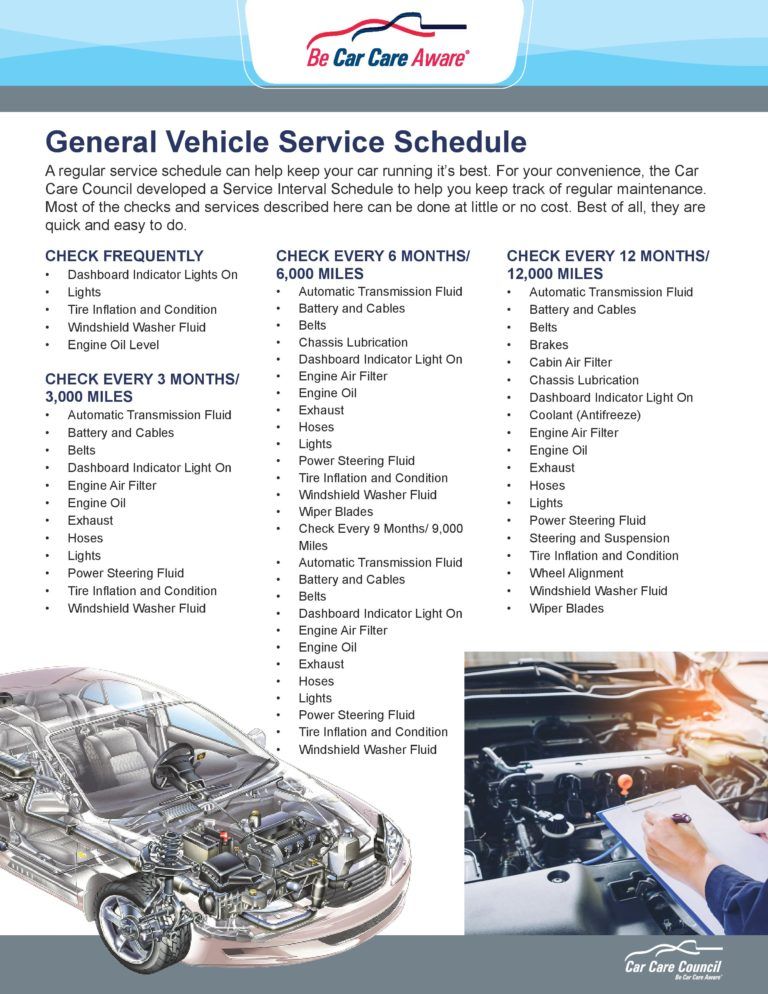 The type or purpose of the tire is also a factor influencing mileage.
The type or purpose of the tire is also a factor influencing mileage.
Speed Rating: This is the T mark on your tire. Indicates the maximum speed the tire can reach and maintain without damage. Make sure you don't exceed the specified speed limit to prevent a blowout.
Load index: The load index is indicated by the first two numbers after the size. Specifies the maximum weight each tire can safely carry. The higher the load index, the higher the load capacity.
Rolling resistance: This is the force required to roll at a fixed speed in kilometers per hour. The lower the rolling resistance, the higher the fuel efficiency. Rolling resistance varies from tire to tire and is often determined by tread design, tread compound, size and construction.
An off-road vehicle is a vehicle that can be operated in various road conditions and in any weather. Such cars are designed to overcome off-road, rain-washed country roads, and at the same time feel confident on highways.
Such cars are designed to overcome off-road, rain-washed country roads, and at the same time feel confident on highways.
Modern jeeps combine increased comfort and the ability to develop greater speed. They differ from other cars in their wheel arrangement, heavy weight and powerful engine, in some cases, a reinforced frame. But in order to improve these characteristics and patency of the car, it is necessary to choose the right tires.
Select tires according to the vehicle or by specifying the size
For safety, crossovers and SUVs use specialized SUV tires. They are able to withstand significant weight, high speed and overcome impassability. Their load index is higher than that of conventional tires. The rubber from which they are made is reinforced with an additional metal or reinforced cord. This is what distinguishes them from ordinary tires. Such SUV tires, in turn, are divided into types and are selected according to the operating conditions of the car and the roadway.
Conventionally tires for SUVs can be divided into:
Select tires according to the vehicle or by specifying the size
Each of the above types has its own marking:
AT (all terrain) - This marking means that tires can be used on asphalt, dirt roads and in light off-road conditions. Such tires are not designed for active driving on asphalt. Tread pattern of medium aggressiveness. These tires have average off-road flotation. This tire is ideal for rural areas.
HT(half terrain, highway terrain) - Absolutely not recommended for off-road use. This tire can be used on paved roads, roads of poor quality. These are road tires with a speed limit of S (180 km/h). Quiet, comfortable, with high controllability.
Quiet, comfortable, with high controllability.
MT(mud terrain) - For off-road, with an aggressive powerful tread pattern, increased profile height, with additional lugs, reinforced cord. These tires are mainly for off-road driving and on dirt roads. On asphalt they are very noisy, brake poorly and have low speed capabilities.
HP (High Performance) - This marking can also be found for passenger cars. The peculiarity of these tires is high performance and the ability to develop high speed (H - 210 km / h). These tires are designed exclusively for asphalt pavement. They are mainly put on premium crossovers and jeeps.
As for passenger cars, SUV tires are divided into winter, summer and all-weather tires. And the rules for using SUV tires are the same as for passenger cars.
Summer are designed for use in warm weather. They are made from a special solid rubber compound, which perfectly withstands high speeds and temperature loads. But at low temperatures (below +7 ° C), tires lose grip on the road surface.
But at low temperatures (below +7 ° C), tires lose grip on the road surface.
For the production of winter models, soft grades of rubber are used. This tire compound retains elasticity at low temperatures. They have a branched tread pattern that effectively wicks away water and mud. Mark them with a snowflake icon. According to the tread pattern, winter tires are divided into European and Scandinavian types. The Scandinavian type is designed for harsher winters. Studded or non-studded winter tires are available for modern SUVs.
All-season - presented as universal and can be used in all seasons, even in winter. The special tread pattern provides good traction in both summer and winter conditions.
Important: All-season tires work best in the temperature range from -10°C to +10°C. If you deviate from these indicators, road grip and work efficiency are significantly reduced.
For safety, we recommend having two sets of tires designed separately for driving in the warm season and in winter.
When buying tires, you need to choose the right size. The size must be the same as it is provided for in the technical documentation for the car.
Select tires according to the vehicle or by specifying the size
Also, before buying, analyze the conditions of the roads in which you operate the machine. The right choice of winter tires for SUVs provides:
For fast road trips, it is better to buy wider tires with a lower height ratio. It will provide better grip on the road surface, making cornering easier.
Off-road tires are more suitable, with a height to width ratio of 75-85%.
For winter tires, the higher the profile and the smallest wheel width, the better.
This improves handling on slippery roads.
Michelin Latitude Tour HP
Premium symmetrical tread tire for crossovers and SUVs.
Country of origin: France, Hungary, Poland, Spain, Italy, Thailand, Canada, USA.
Model available since 2011. The main advantage of the Latitude Tour HP model is the high level of comfort and extended service life. The tire has been selected by leading SUV and off-road vehicle manufacturers as original equipment for the Audi Q5, Mercedes GLK, M Class and R Class. The aforementioned cars jump off the assembly line on these tires. The Michelin trick allows the wheel to be both soft and hard at the same time, depending on how much load and at what angle to apply to it. This ensures cornering stability and uniform wheel wear.
Toyo Proxes CF2 SUV
Premium summer tire with asymmetric tread pattern for crossovers and SUVs. The model also has a light version.
The model also has a light version.
Country of origin: Japan, Malaysia.
Toyo Proxes CF2 SUV is characterized by stable handling, comfortable ride, excellent wet grip and fuel efficiency.
Kumho Crugen Premium KL33
Country of manufacture: China, Korea
The sports tire comes as standard with the Kia Sportage and Hyundai Santa Fe family SUVs. The model guarantees comfort, good control in all weather conditions, as well as acoustic comfort in the car. The model is durable and strong.
Nokian Hakkapeliitta R2 SUV
Premium Velcro directional tread designed for crossovers and SUVs. The model also has a light version.
Country of origin: Finland, Russia.
The tire perfectly holds the road in all weather conditions, provides comfortable safe movement and significant fuel savings.
Bridgestone Blizzak DM-V2
Nordic premium friction tire (studless, Velcro) with directional tread pattern for crossovers and SUVs.